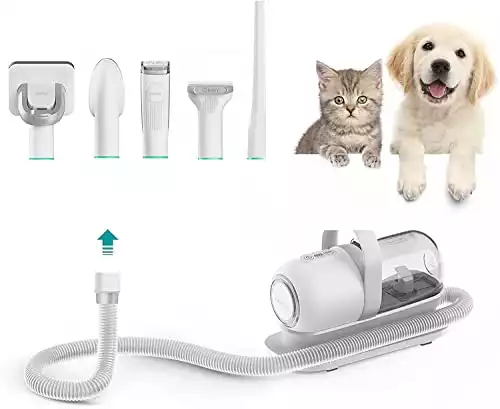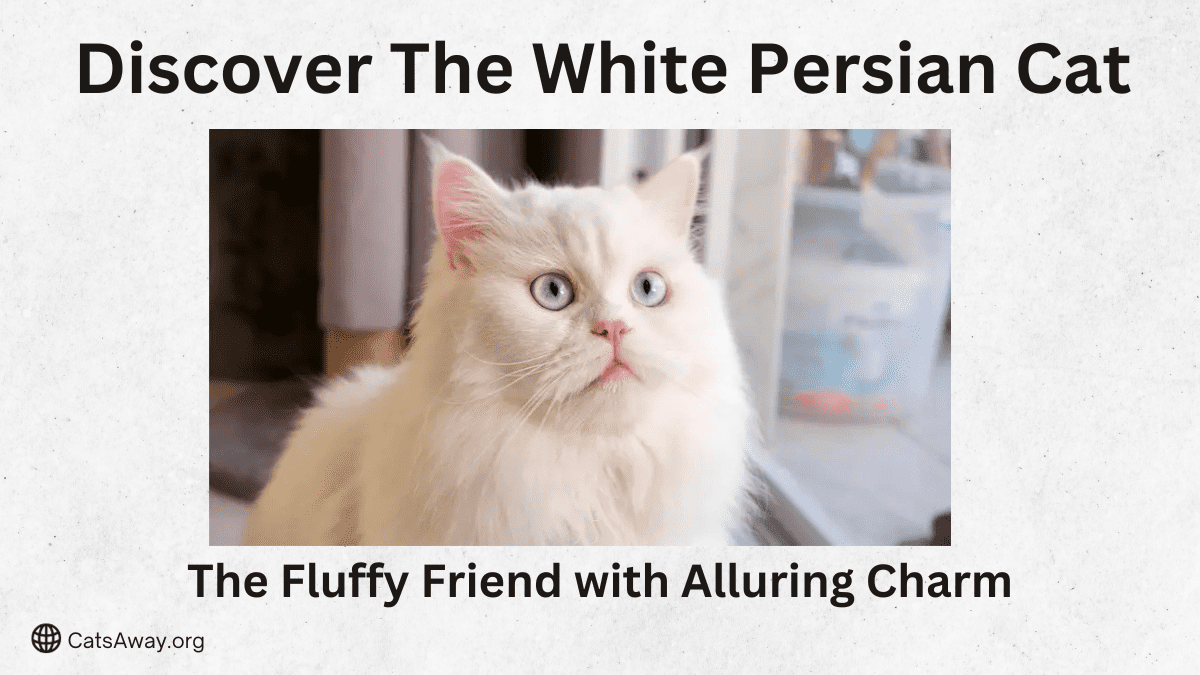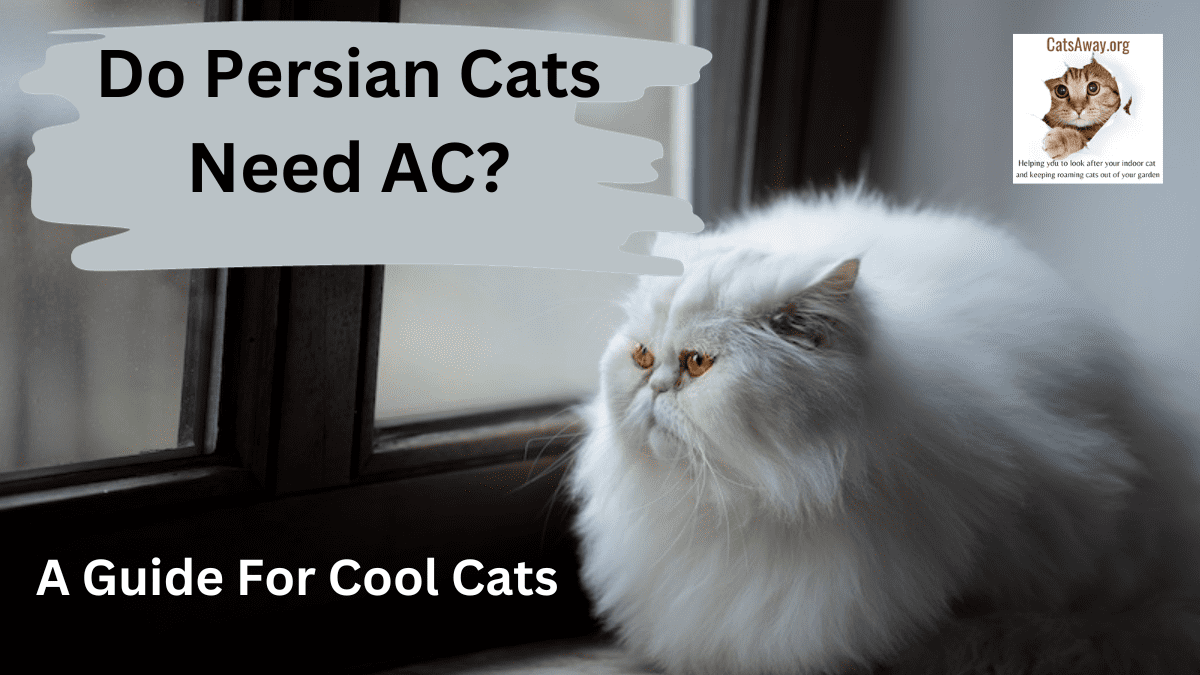Persian cats are one of the most popular breeds of cats worldwide. They are known for their long, fluffy fur and sweet personalities. However, many people wonder whether a Persian cat is hypoallergenic or not.
The answer is no, Persian cats are not hypoallergenic. While no cat breed is completely hypoallergenic, some breeds are less likely to cause allergies than others. Unfortunately, Persian cats are not one of them. Their long fur can trap allergens like dander and dust, which can trigger allergies in sensitive individuals.
If you are considering getting a Persian cat but have allergies, it’s important to take precautions. Regular grooming, including bathing and brushing, can help reduce the amount of dander and fur in your home.
You can also consult with your physician to manage your allergy symptoms. While Persian cats are not hypoallergenic, with proper care, they can still make wonderful and loving pets.
What Makes a Cat Hypoallergenic?

Proteins and Dander
When it comes to allergies caused by Persians or any other breed, the main culprit is a protein called Fel d 1. This protein is found in the saliva, urine and skin of cats. When cats groom themselves, the protein is transferred to their fur, which then sheds and spreads throughout the environment.
As the fur dries out, it becomes airborne and can be inhaled by humans. Cat dander, which is made up of dead skin cells, also contains the proteins and can trigger allergic reactions.
Fur and Shedding
Cats with shorter hair or no hair at all are often considered more hypoallergenic because they shed less fur. However, even a cat with shorter hair can still produce Fel d 1 and cause allergies, it’s just more likely to only be mild reaction.
Cats with longer hair tend to shed more, which can spread more allergens throughout the environment. Regular grooming can help reduce the amount of fur and dander that is shed.
Saliva and Grooming
Cat saliva also contains Fel d 1 and can be transferred to their fur during grooming. Some cats groom themselves more frequently than others, which can increase the amount of allergens on their fur.
Regular grooming can help reduce the amount of saliva and allergens on the cat’s fur. However, it’s important to note that even cats that are bathed regularly can still produce the protein and cause an allergic reaction.
In conclusion, no cat breed is completely hypoallergenic. However, some cats may produce less Fel d 1 and shed less fur, which can make them more tolerable for people with a cat allergy. It’s important to note that allergies can vary from person to person, and what works for one person may not work for another.
If you’re considering getting a cat and have allergies, it’s recommended to spend time with the cat before bringing them home to see how you react.
Are Persian Cats Hypoallergenic?

As already mentioned, the Persian cat breed is not hypoallergenic and they can cause allergies in some people.
The Persian cat is not the worst breed for the production of fel d 1, but their long coats can often contain high levels of cat dander if they aren’t groomed regularly and bathed often.
If you do decide to adopt a Persian cat, there are some steps you can take to minimize the amount of dander in your home. Regular grooming is essential to keep their coat healthy and reduce shedding. A high-quality cat food formulated for indoor cats can also help keep their skin and coat in good condition.
In conclusion, Persian cats are not hypoallergenic. While they may not be the worst breed for allergies, their cat fur can still cause reactions in some people. If you’re considering adopting a Persian cat, it’s important to be aware of the potential for allergies and take steps to minimize dander in your home.
Hypoallergenic Cats
There are several cat breeds that are considered as being hypoallergenic. These breeds produce fewer allergens than other cat breeds and will be better suited for most allergy sufferers. Here are some of the most popular hypoallergenic cat breeds:
Siberian
Siberian cats are known for their thick, fluffy coats, but despite their long hair, they are considered hypoallergenic. They produce lower levels of the Fel d 1 protein, which is the main allergen found in cat saliva and skin.
Siberians are also known for their friendly and playful personalities, making them a great choice for families.
Russian Blue
Russian Blue cats have short, dense coats that shed very little, making them a good choice for people with allergies. They are also known for their calm and affectionate personalities, and they tend to be less vocal than other breeds.
Siamese
The Siamese cat has a short, fine coat that produces less dander than other breeds. They are also very social and love attention, making them a great choice for families. However, they can be quite vocal and may not be the best choice for people who prefer a quiet home.
Bengal
Bengal cats have short, silky coats that shed very little. They are also known for their playful and curious personalities, and they love to climb and explore. Bengals are a great choice for people who want a hypoallergenic cat with a lot of energy.
Devon Rex
Devon Rex cats have short, curly coats that shed very little. They are also known for their friendly and affectionate personalities, and they love to play and cuddle. Devons are a great choice for people who want a hypoallergenic cat that is easy to groom.
Balinese
Balinese cats have long, silky coats that produce less dander than other long-haired breeds. They are also known for their friendly and affectionate personalities, and they love to be around people. Balinese cats are a great choice for people who want a hypoallergenic cat with a luxurious coat.
Cornish Rex
Cornish Rex cats have short, curly coats that shed very little. They are also known for their playful and curious personalities, and they love to explore their surroundings. Cornish Rex cats are a great choice for people who want a hypoallergenic cat with a unique look.
Oriental Shorthair
Oriental Shorthair cats have short, fine coats that produce less dander than other breeds. They are also known for their playful and energetic personalities, and they love to be around people. Oriental Shorthair cats are a great choice for people who want a hypoallergenic cat with a lot of personality.
Javanese
Javanese cats have long, silky coats that produce less dander than other long-haired breeds. They are also known for their friendly and outgoing personalities, and they love to be around people. Javanese cats are a great choice for people who want a hypoallergenic cat with a lot of energy.
In conclusion, there are several cat breeds that are considered hypoallergenic. While no cat breed is completely free of allergens, these breeds produce fewer allergens than other breeds and can be a great choice for people with allergies.
Reducing Allergens in Your Home
Allergens from Persians can be a nuisance for those who suffer from cat allergies. However, there are several ways to reduce the amount of allergens in your home. Here are some tips to help you manage your allergies and keep your home clean and comfortable.
Cleaning and Grooming Tips
Regular cleaning and grooming can help reduce the amount of cat hair and dander in your home. Here are some tips to help you keep your home clean:
Vacuum carpets and furniture regularly using a HEPA filter to capture allergens.
Wash your Persian cat’s bedding and toys frequently with an antibacterial hand wash.
Use a litter box with a cover and a high-quality litter to reduce dust and odors.
Bathe your Persian cat regularly with a mild, hypoallergenic shampoo to remove excess hair and dander.
Invest in a professional cat grooming kit such as the one below to avoid spreading dander when brushing and trimming.
Traditional pet hair trimmers create a lot of mess and hair in the home. The best selling P1 Pro grooming kit with vacuum function collects 99% of pet hair into a vacuum container while trimming and brushing hair, which keeps your home clean. Ideal for cat allergy sufferers as the dander is collected before getting into the air.
Air Purifiers and Filters
Air purifiers and filters can help remove allergens from the air in your home. Here are some tips to help you choose the right air purifier:
Look for an air purifier with a HEPA filter, which can capture small particles like cat hair and dander.
Choose an air purifier with a high CADR (clean air delivery rate) to ensure that it can clean the air in your room effectively.
Place the air purifier in the room where you spend the most time, such as your bedroom or living room.
Ease sneezing, congestion, and other pet allergy symptoms caused by airborne contaminants. The H13 True HEPA Filter works alongside the Pre-Filter and High-Efficiency Activated Carbon Filter to capture 99.97% of airborne particles 0.3 microns in size, such as dander, dust and pollen
- CADR (clean air delivery rate) of 240m³ per hour
- Extremely quiet
- Looks great
- Pet Allergy Filter captures pet dander and absorbs unpleasant odors
Other Strategies
In addition to cleaning and using air purifiers, there are other strategies you can use to reduce allergens in your home. Here are some tips:
Use allergen-proof covers on your pillows and mattress to prevent dust mites from accumulating.
Wash your hands frequently and avoid touching your face to reduce the risk of allergy symptoms.
Consider replacing carpets with hardwood or tile flooring, which are easier to clean and don’t trap allergens as easily.
Check out my other tips on how to control cat hair around the home.
By following these tips, you can reduce the amount of allergens in your home and enjoy the company of your Persian cat without suffering from allergies.
Treatment Options for Cat Allergies
When it comes to cat allergies, there are several treatment options available. Depending on the severity of the allergic reaction, you may need to see an allergy specialist for a proper diagnosis and treatment plan.
First off, try these tips on how to get ride of cat allergies naturally before trying meds. If they don’t work your doctor may recommend antihistamines and decongestants which can help relieve symptoms such as sneezing and a runny nose. In more severe cases, corticosteroids may be prescribed to reduce inflammation.
It is important to note that these medications can have side effects and should only be taken as directed by a healthcare professional.
Another option is immunotherapy, also known as allergy shots. This treatment involves gradually exposing the individual to small amounts of the allergen over time, which can help build up their immunity and reduce the severity of their allergic reaction.
In addition to natural remedies, medication and immunotherapy, there are also lifestyle changes that can help reduce cat allergies.
Keeping the home clean and free of cat dander is important. Using air purifiers and vacuum cleaners with HEPA filters will help reduce the amount of allergens in the air.
If you suffer with asthma or a food allergy and are allergic to cats, it is important to take extra precautions and work closely with a healthcare professional to manage your condition.
It is also important to be aware of common cat allergy symptoms, such as you start sneezing, itching or have difficulty breathing when you are around a cat.
Overall, while there is no cure for cat allergies, there are several treatment options available to help manage symptoms and improve quality of life for those affected.
To summarize
There are many cat owners who are allergic to cats but most of them will have a hypoallergenic breed. If you have allergies please try and spend an hour or two with a Persian before committing to owning one.
If your allergies are mild then reducing cat allergies can be achieved by taking several measures, such as bathing and brushing the cat regularly. Neutering male cats can also help reduce allergens, as unneutered males produce more of the Fel d 1 protein.
It is also important to keep the home clean and free of pet dander, which can be airborne and trigger allergies. Invest in a decent pet vacuum and an air purifier.








